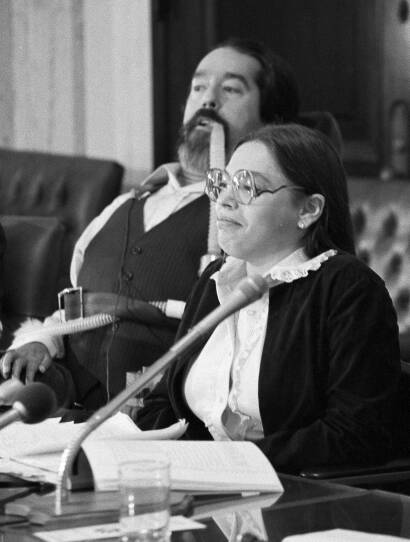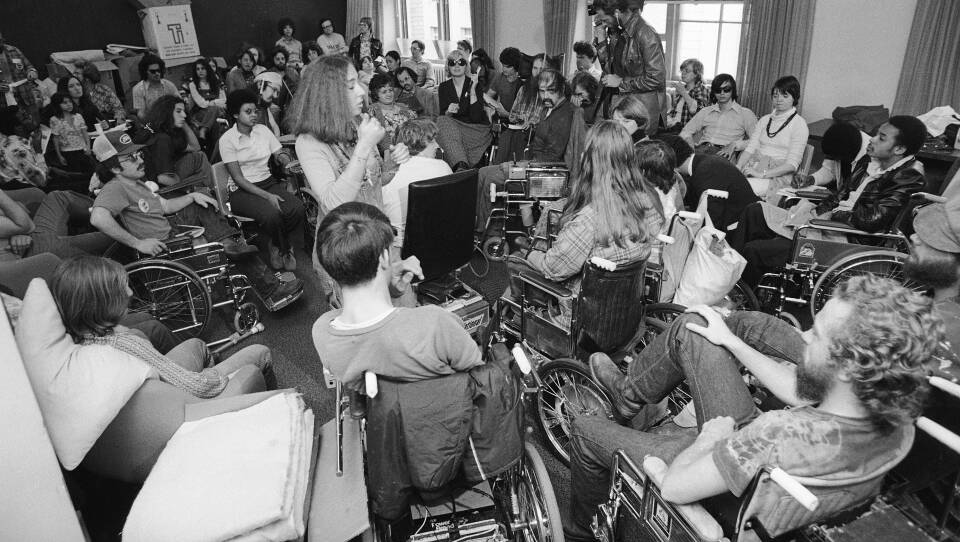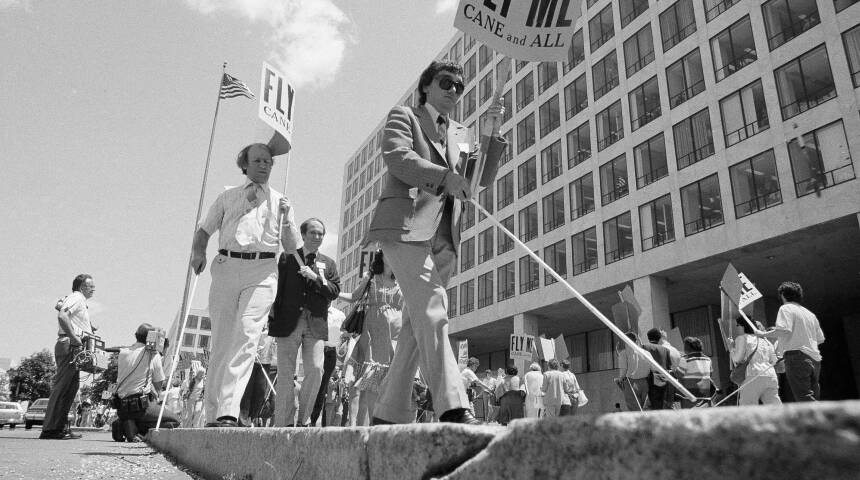Judy Heumann’s death last year was deeply felt in the disability community. Often called “the mother” of the disability rights movement, her activism had a lasting impact on millions of Americans. Yet many people don’t know her name.
“She was a really strong advocate. She knew what she wanted. She really pushed for her human rights,” says Acton resident Anna Weinberger, who says Heumann has inspired her and her work as an advocate for people with autism.
Weinberger is a volunteer with Easterseals Massachusetts, a nonprofit that provides a wide range of disability services and programs. The organization is behind a grassroots campaign to get more disability history into classrooms — something a growing group of advocates and educators are also pushing to happen. Currently, there’s no requirement for disability history to be taught in schools.
“I wanted to get involved with it [the campaign] because I really thought it would be a good opportunity for me to teach people about this disability history, because it's not really taught in schools,” Weinberger said.
Take Heumann, for example. Her activism helped lead to the creation of the Americans with Disabilities Act, the landmark legislation which barred discrimination in public places and ensured equal access to transportation, education and employment.
Quiz: How much disability history do you know?
“I was in school from 1990 onward, so I'm part of what they call the ‘ADA generation.’ I always had the ADA at my back,” said Desiree Forte, the youth program manager at Easterseals Massachusetts. Still, she rarely saw disabled people like herself in textbooks.
The ADA may be relatively more well-known, but other historic events in the disability rights movement not as well: The 504 Sit-in of 1977, when more than 100 people took over a federal building in San Francisco for 26 days to push for the enforcement of section 504 of the Rehabilitation Act of 1973, the longest takeover of a federal building ever in American history; The Capitol Crawl, when dozens of disabled people climbed up the steps of the Capitol building in 1990 to demand urgency to pass the ADA.
Graham Warder, chair of the history department at Keene State College in New Hampshire, says disability history is a “rich” history for students of any age.
“It opens up all kinds of new kinds of questions, about sometimes old subjects,” he said. “I mean, how can you talk about war without talking about disability? How can you talk about the workplace without talking about disability? How can you talk about the roles of government? These are real standard questions in history.”
“You can't find a period in history or a place in geography or time where there aren't people with disabilities. And yet somehow, we’ve barely scratched the surface of that history,” said Fred Pelka, a writer who has chronicled the disability history movement and teaches a course on disability advocacy at UMass Amherst.

Pelka notes there has been an increase in interest in disability history in recent years.
“It’s long overdue,” he said.
Massachusetts is one of several states that recognize Disability History Month every October. And in 2018, the state rewrote its social studies and history standards to be more inclusive, including some history about the disability rights movement. The Massachusetts Department of Elementary & Secondary Education now provides a video resource, The Great Fight for Disability Rights, and associated curriculum to teachers for free if they request it.
A handful of states, including New Jersey, Nevada, California and Kansas have laws on the books about including disability history in their curriculum standards.

But Rich Cairn, the history, civics and social studies inclusion specialist at Emerging America, based in Northampton, notes those standards aren’t always enforced, and there’s a gap in awareness about the material and resources for teachers.
There has not been much formal research on how many teachers are already incorporating disability history into their classroom, according to Cairn.
Emerging America developed the disability history curriculum Reform to Equal Rights with funding from the Library of Congress. They spread the word about the free curriculum through webinars, conferences and professional development events.
“It feels like it's starting to show some signs of being a movement,” he said.
The Emerging America curriculum focuses on using primary sources documents. For example, it includes a black and white silent film from 1913, which shows Deaf pioneer George Veditz sharing the importance of American Sign Language. Veditz used film to preserve the language when people like Alexander Graham Bell were trying to stamp out ASL.
“I think it's really awesome because he is using this kind of new form of communication, you know, silent pictures, in order to advocate for his community. Because at this time, all around the world and across the U.S., in most Deaf schools, sign language was under threat,” said Ross Newton, who teaches history at HEC Academy in Northampton, a therapeutic special education high school.
Newton has used the Emerging America curriculum in his classroom and said it can fill a critical gap in K-12 education and fight stigma about disability.
Newton, who uses a wheelchair and is a history scholar, points to figures like Ed Roberts, who is credited as the founder of the independent living movement, as someone more students should know about as a civil rights leader.
Kate Benson, a longtime special education teacher and administrator and president of Belchertown State School Friends Association, said that the Emerging America curriculum presents a more inclusive view of American history.
“It approaches it from another angle, saying, OK, so you're going to talk about the Civil War, but let's also talk about institutions for the disabled and what it looked like for soldiers who had shellshock before we knew what shellshock was,” she said. “If we're going to talk about women's rights and abolitionism, let's also talk about women's rights in relation to involuntary commitment to institutions, things like that.”
Benson says there is a lot of local disability history for teachers to dig into, including institutions like Belchertown, as well as the Fernald School in Waltham, which taught and served people with disabilities and was the first public institution of its kind in the U.S.
She says that learning about the history of these institutions and their eventual closures can help students “be advocates for themselves by watching how other people advocated for themselves during that time.”
That’s true for the Easterseals volunteers. At a recent campaign meeting, everyone was asked to share a figure from disability history who they wanted to learn more about.
Adner Martinez, a student at MassBay Community College studying communication, chose a few artists: Ray Charles, because he loves jazz, and Maya Angelou.
“I knew she was in school and she herself had a disability,” he said later about why he chose Angelou. “And so in my experience, when I was in elementary school, middle school and high school, I feel like for me — me and Maya Angelou had a similarity. And that inspired me a lot.”






